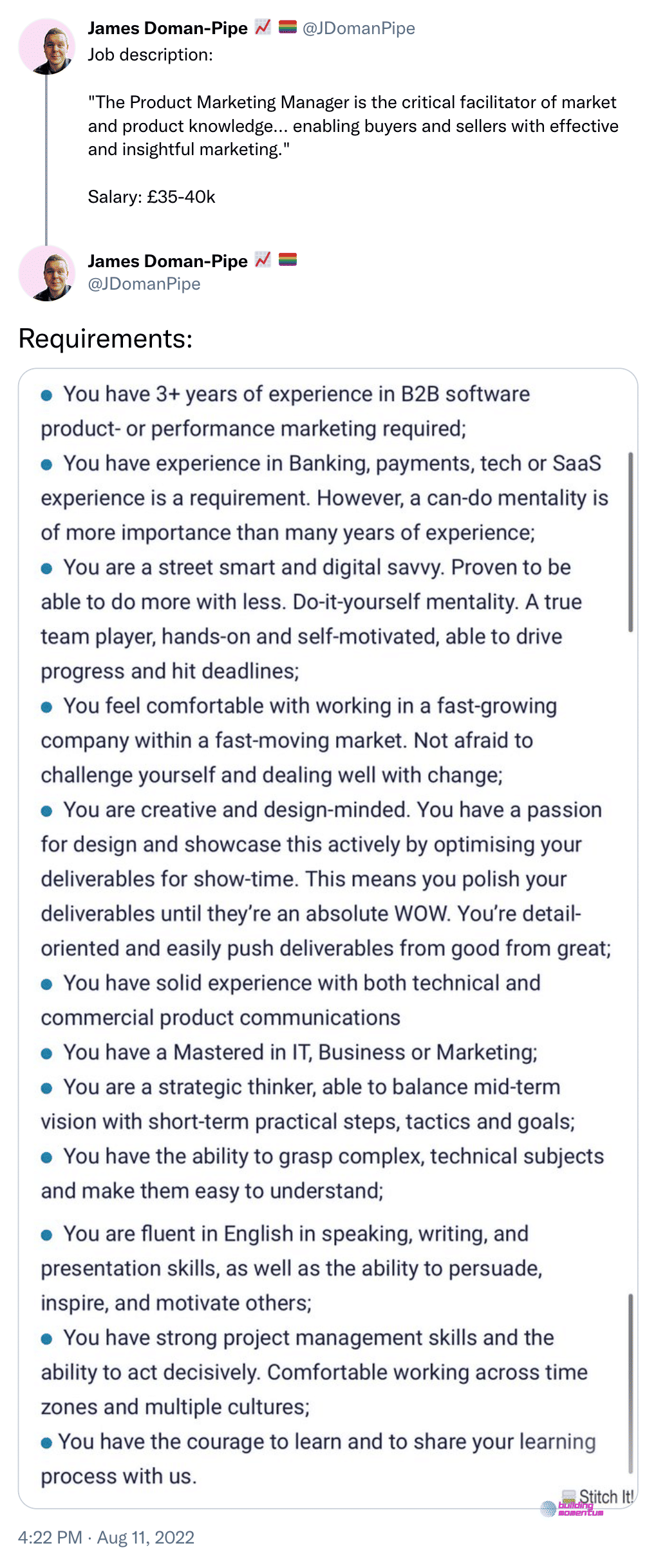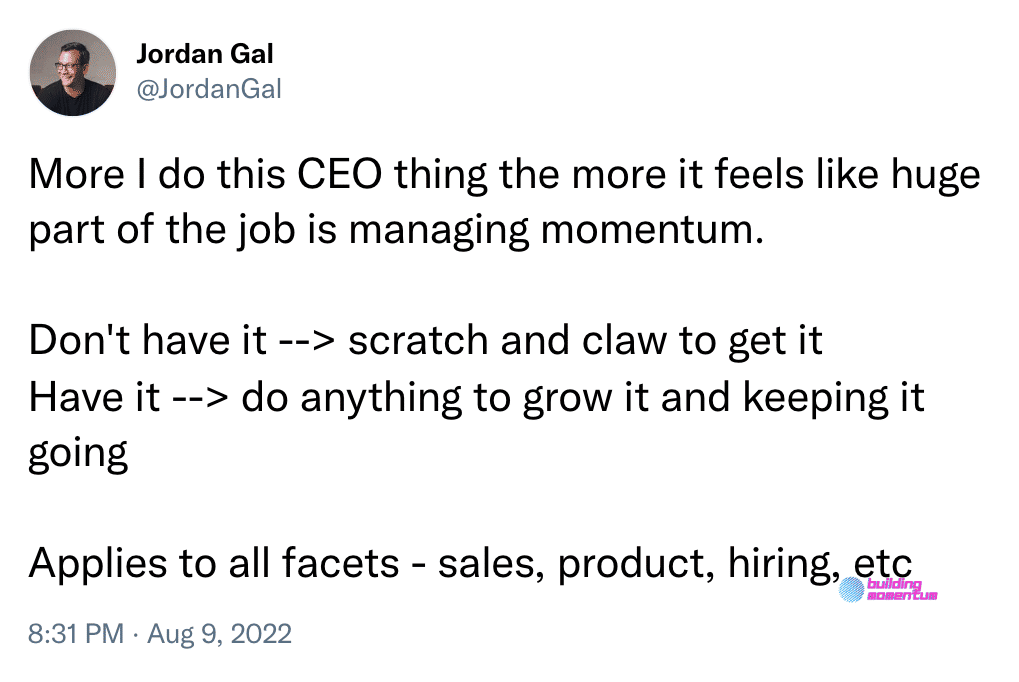The Overview #61
Hey there. This is The Overview, a weekly roundup of noteworthy B2B SaaS stuff. You’ll find interesting thoughts, articles, and more from around the internet.
In this post:
What not to write in a PMM job ad

Aside from the grammar and typos, this is a prime example of what not to do in a job ad.
Here are some of my tips on hiring product marketers.
Move from assumptions to evidence

One of the biggest things I preach is to stop using internal assumptions, and instead look to your customers and to the market – and actually hear what they say.
Maybe the company started because it scratched an itch the CEO had before. Maybe you were selling to similar companies and peers at the beginning. But it’s highly likely that you are no longer your ideal customer. What you knew then does not help you now.
Take the customer empathy map challenge. See what your team agree on, disagree on, and where you don’t know enough.
Then go to the market and carry out customer research interviews. You’ll be surprised at what you learn.
It’s all about momentum

You have to experience momentum to know what it feels like. I’ve experienced it at two companies before, and it’s exciting. Things are falling into place. Work is aligned. Results are coming through. People are having fun.
At some point I want to write a book about momentum, and what I call my ‘early-stage equation’: Focus (prioritisation AND clarity) plus Confidence (reality matches expectations) equals Momentum (growth, motivation, alignment, fewer barriers).
The opposite is inertia: big, hard rocks that you can’t move for lack of trying that’s caused by either a lack of velocity, or increased resistance. You’ll definitely know when you’re experiencing inertia.
Swipe File: Creating a ‘growth’ culture
???? When you become a free Building Momentum subscriber, you get access to my exclusive product marketing swipe file! Click here to find out more.
This HBR article spoke to me so much. We can’t and shouldn’t chase a high performance culture, or you’ll find burnout, turnover, and a ‘results at all costs’ attitude.
Instead, a growth culture is more sustainable. Growth cultures care about how people feel, and the behaviours that occur as a result. They require:
- An environment that feels safe, fueled first by top by leaders willing to role model vulnerability and take personal responsibility for their shortcomings and missteps.
- A focus on continuous learning through inquiry, curiosity and transparency, in place of judgment, certainty and self-protection.
- Time-limited, manageable experiments with new behaviors in order to test our unconscious assumption that changing the status quo is dangerous and likely to have negative consequences.
- Continuous feedback — up, down and across the organization – grounded in a shared commitment to helping each other grow and get better.
Thanks for reading! Let me know what you thought – find me on Twitter and LinkedIn.
P.S. If you’ve found value in Building Momentum, could you buy me a coffee? Here’s my tip jar – any support is gratefully appreciated!
P.P.S: If you enjoyed this post, will you share Building Momentum with your network?

